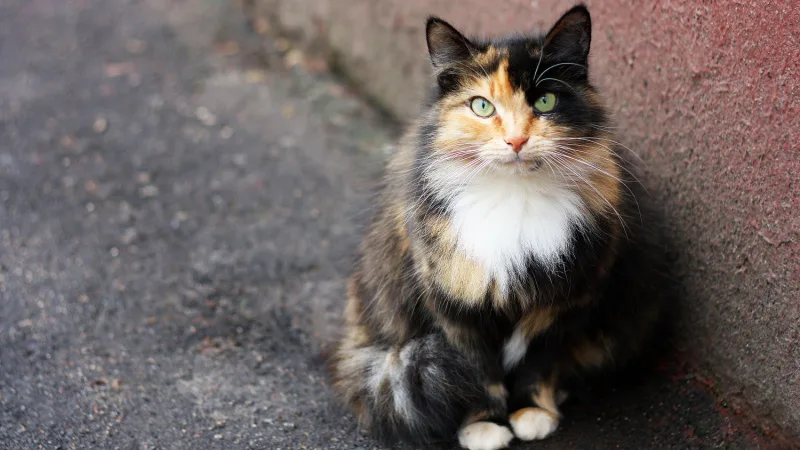How to Help Feral and Stray Cats with Trap-Neuter-Return
Learn how to help feral or stray cats through the compassionate trap-neuter-return program, which helps limit the number of kittens born outdoors.

You’ve definitely seen them—a group of cats in your neighborhood that live together outside. These kitties were likely born outdoors and haven’t been socialized around humans. They’re feral, but that doesn’t mean they’re bad cats! They’re just different from your indoor housecat, and they need to be cared for too. You can meet them where they are and provide the care they need—and break the cycle of more kitties being born without homes.
The Difference Between Feral and Stray Cats
“Community cats” is an all-encompassing term that refers to any cat living outside and includes both stray and feral felines. A stray cat may have had a home at some point, but was likely abandoned or lost.
A feral cat was born outdoors, and since they rarely interact with humans, they are afraid of people and, therefore, unadoptable. Kittens need to be socialized with humans at a very early age to enjoy living indoors and being around humans. Even though feral cats are unfriendly to humans, they are still deserving of a good life.
What Is Trap-Neuter-Return?
Trap-Neuter-Return (or TNR) is a compassionate way to help care for community cats. Shelters are overrun with cats and kittens and breaking the cycle of reproduction in outdoor populations is the kindest thing we can do.
T: Trap a feral cat using a humane trap and bring them to the vet.
N: Have the vet spay or neuter the feral cat, plus handle any other necessary vet care, such as vaccines.
R: Return the cat to where they were originally trapped.
There are nonprofit organizations that go out and do the good work of TNR, and most likely, they’re looking for volunteers to help. You can look up TNR groups in your community and ask how you can get involved.
How to Know if a Cat Has Been TNR’d
If there’s a colony of feral cats in your neighborhood, you can easily check to see if they’ve been spayed or neutered. Look for an ear tip. An ear-tipped cat will have one normal, pointy ear and the other will look like a small portion is missing. This is a universal signal that indicates the kitty has been spayed or neutered. That way, the cat won’t be trapped and brought to the vet unnecessarily. Ear-tipping doesn’t hurt and is done under anesthesia.
3 Ways to Help Stray Cats
Here are a few ways you can help cats in your community:
Provide outdoor shelters to keep them safe from the elements. You can buy one online or build one yourself. In winter, this can be a lifesaver for community cats.
Giving community cats access to clean water and healthy food is a very easy way to contribute. Plus, with full bellies, they’re less likely to disrupt local wildlife from hunting.
Educate yourself. There are resources online that will help you learn how to care for community cats or foster kittens that came from a feral colony.
Caring for community cats goes beyond TNR. You can help them live happy and healthy lives even if you’re unable to help with the process directly.
Take some of the stress out of pet ownership with Accident & Illness Coverage from AKC Pet Insurance (underwritten by Independence American Insurance Company). Our cat insurance plans are designed to be there when you need them, allowing you to focus more on the health of your pet and less on costly veterinary bills.

Every Dog and Cat Deserves the Pet Insurance of Champions
Get prize-winning care for your pets.
Aimee is a New Jersey native currently living in Richmond, Virginia with her husband and crew of four cats. She has an English degree and when she isn't writing for AKC Pet Insurance, you can find her drinking seltzer, painting, watching reality TV shows, and trying to wrangle her cats into sweaters.
READ MORE ARTICLES

